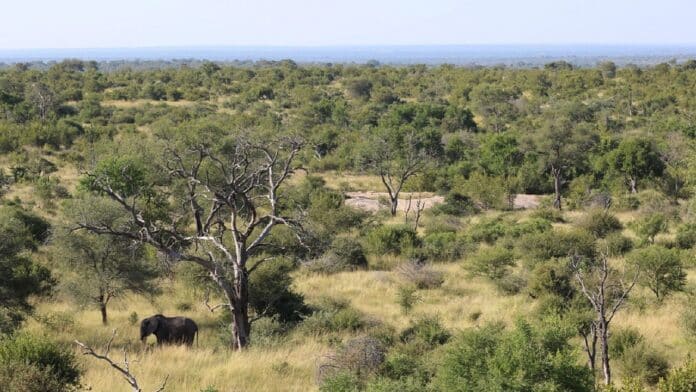A growing awareness of global warming has prompted efforts to reverse troubling trends by planting trees to capture and remove carbon dioxide from the atmosphere and store it.
A new study led by Young Zhou from the Quinney College of Natural Resources and the Ecology Center has found that grasses also play an important role in capturing carbon.
The new study, published in Nature Geoscience, found that savanna soils loaded with carbon from grasses had higher carbon contents. According to their findings, grasses accounted for more than half of the soil carbon content in tropical savannas, including soils directly beneath trees.
The new study aimed to capture carbon in tropical savannas, an ecosystem distinguished by shared space between trees and grasses. The project started an afforestation program to plant trees to capture carbon dioxide from the atmosphere, which resulted in carbon being stored mostly in soils and the woody biomass of the growing trees.
Forests generally store carbon in their woody trunks and aboveground leaves. In comparison, a significant portion of the carbon is stored in the soil of grassy ecosystems, such as savannas and grasslands, mostly in the form of grasses’ huge root systems and decomposing organic waste. Regarding long-term carbon storage, carbon kept in soils is more reliable, especially in light of the vulnerable future marked by global warming and an increase in the possibility of drought and wildfires.
The researcher and his team set out to identify the role grasses played in this attempt because, while the efficiency of storing carbon in trees has been well established in studies, how carbon storage operates in soils could have been better characterized. They performed a thorough investigation on the contribution of grasses to carbon content in savanna soils and the potential impact of increased tree cover in tropical savannas on soil carbon storage.
Young Zhou said, “On average, the increase in soil carbon storage resulting from the expansion of tree cover across tropical savannas is negligible.”
He added, “Our findings challenge the assumption that afforestation boosts soil carbon storage uniformly. However, we have yet to pinpoint the factors responsible for the substantial variation observed in the soil carbon storage response to increased tree cover across tropical savannas.”
The researchers from Utah State University discovered carbon gains and losses as tree cover expanded over tropical savannas. The most significant difference was observed in savannas with more rainfall, where tree planting is more likely to succeed, as well as in places with clay soils and savanna sites with substantial contributions of carbon storage from grasses. This highlights the complexities of increasing tree cover on carbon dynamics in savanna soils.
The researcher said, “It makes even clearer that savannas play crucial roles in the global carbon cycle in their unique ways, underscoring the importance of preserving and protecting these ecosystems equitably.”
Journal Reference:
- William J. Bond, Madelon F. Case, et al. Soil carbon in tropical savannas is mostly derived from grasses. Nature Geoscience. DOI: 10.1038/s41561-023-01232-0
